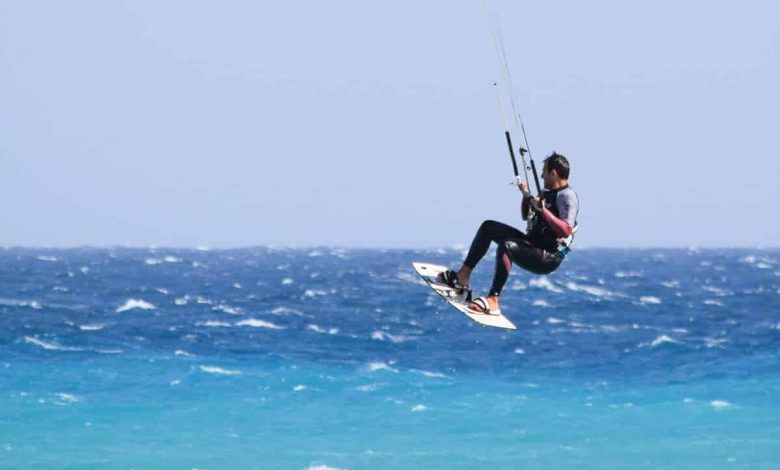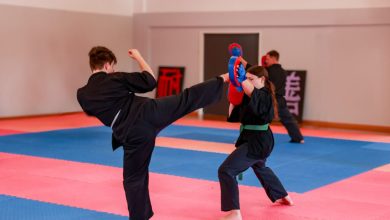The Evolution of Kitesurfing: From its Origins to Modern-Day Trends

Kitesurfing has rapidly evolved from a niche sport into a global phenomenon, attracting thrill-seekers and water sports enthusiasts from all over the world. This dynamic sport, which combines elements of surfing, windsurfing, and paragliding, has seen significant advancements in technology, techniques, and popularity over the years. In this article, we’ll take a closer look at the fascinating evolution of kitesurfing, from its early origins to the modern-day trends shaping the sport today.
-
The Origins of Kitesurfing
The concept of using a kite to propel a person or vehicle isn’t new; it dates back centuries. However, the specific application of kites for water sports began to take shape in the late 20th century. Early pioneers experimented with various designs and techniques to harness the power of the wind for water-based activities.
- 1980s: The origins of kitesurfing can be traced back to the 1980s when brothers Bruno and Dominique Legaignoux, from France, developed an inflatable kite designed specifically for water sports. Their invention, known as the “Wipika,” laid the foundation for modern kitesurfing by introducing the concept of relaunchable kites, which could be easily launched from the water.
- 1990s: Throughout the 1990s, kitesurfing began to gain traction, with more enthusiasts and inventors contributing to the development of the sport. The introduction of the first commercially available kitesurfing equipment, including kites, boards, and harnesses, made the sport more accessible to the general public. The first kitesurfing competitions also took place during this decade, further popularizing the sport.
- Tip: For a comprehensive kitesurfing experience that reflects the sport’s rich history and modern advancements, check out El Gouna kitesurfing, a prime location where you can learn and practice the latest techniques.
-
The Rise of Kitesurfing in the 2000s
The 2000s marked a significant period of growth for kitesurfing, as the sport’s popularity exploded around the world. Several factors contributed to this rise, including improvements in equipment design, increased media coverage, and the establishment of kitesurfing schools and centers.
- Technological Advancements: One of the key factors in the growth of kitesurfing during this period was the rapid advancement in kite and board technology. Manufacturers began producing kites with better safety features, such as depower systems and quick-release mechanisms, making the sport safer and more appealing to a wider audience. Boards also evolved, with the introduction of twin-tip boards, which allowed riders to switch directions without changing their stance.
- Global Competitions: The establishment of global kitesurfing competitions, such as the Red Bull King of the Air and the Professional Kiteboard Riders Association (PKRA) World Tour, helped elevate the sport to new heights. These events attracted top athletes and showcased the most extreme and innovative tricks, inspiring a new generation of kitesurfers.
- Increased Accessibility: The proliferation of kitesurfing schools and rental centers made it easier for beginners to get started. With more people learning to kitesurf, the community grew, and the sport became more mainstream.
-
Modern-Day Trends in Kitesurfing
Today, kitesurfing continues to evolve, with new trends and innovations shaping the sport. From advancements in gear to the rise of new disciplines, kitesurfing remains at the forefront of water sports culture.
- Hydrofoiling: One of the most significant trends in modern kitesurfing is the rise of hydrofoiling. Hydrofoil boards feature a wing-like structure beneath the board that lifts the rider above the water, reducing drag and allowing for smoother, faster rides. This innovation has opened up new possibilities for kitesurfers, allowing them to ride in lighter winds and explore new areas of the water.
- Big Air and Freestyle: Big air kitesurfing, which involves performing high jumps and aerial tricks, has become one of the most popular disciplines in the sport. Riders are constantly pushing the limits of what’s possible, with some achieving jumps of over 20 meters. Freestyle kitesurfing, which focuses on technical tricks and maneuvers, also continues to be a dominant trend, with riders showcasing their skills in competitions and on social media.
- Sustainability: As awareness of environmental issues grows, there is an increasing focus on sustainability within the kitesurfing community. Manufacturers are developing eco-friendly gear made from recycled materials, and kitesurfing events are adopting sustainable practices to reduce their environmental impact. The kitesurfing community is also becoming more involved in conservation efforts, such as beach cleanups and marine protection initiatives.
- Women in Kitesurfing: The number of women participating in kitesurfing has grown significantly in recent years. Female riders are making their mark in competitions, and there is a strong push to increase the visibility and representation of women in the sport. Women’s kitesurfing clinics and events are also becoming more common, helping to inspire and empower the next generation of female kitesurfers.
- Tip: To stay up-to-date with the latest trends and techniques in kitesurfing, consider taking lessons at Kitesurf Lessons & Courses, where experienced instructors can guide you through the newest developments in the sport.
-
The Future of Kitesurfing
The future of kitesurfing looks bright, with continued innovation and a growing global community. As technology advances, we can expect to see even more exciting developments in equipment design, safety features, and performance capabilities. The sport is also likely to become more inclusive, with efforts to make kitesurfing accessible to people of all ages, abilities, and backgrounds.
In addition to technological advancements, the kitesurfing community will continue to play a vital role in promoting environmental stewardship and sustainability. As kitesurfers, we have a unique opportunity to protect the natural environments. We love and ensure that future generations can enjoy the same incredible experiences on the water.
Conclusion
Kitesurfing: From its Origins has come a long way since its early days, evolving into a thrilling and diverse sport enjoyed by people all over the world. From the pioneering innovations of the 1980s to the modern-day trends of hydrofoiling and big air, kitesurfing continues to push the boundaries of what’s possible on the water. As the sport continues to grow and evolve, there’s never been a better time to get involved and experience the excitement of kitesurfing for yourself.



